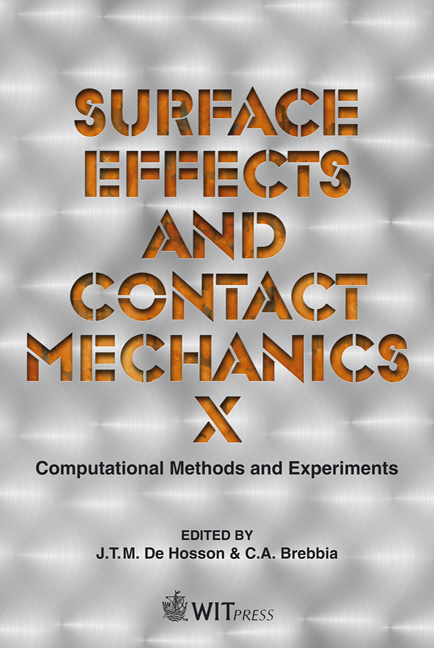Change In Surface States Of Ultrafine Grained Copper Due To Cyclic Stresses
Price
Free (open access)
Transaction
Volume
71
Pages
12
Page Range
135 - 146
Published
2011
Size
3,171 kb
Paper DOI
10.2495/SECM110121
Copyright
WIT Press
Author(s)
M. Goto, K. Kamil, S. Z. Han, K. Euh, T. Yakushiji & N. Kawagoishi
Abstract
High-cycle fatigue tests were carried out on smooth specimens of ultrafine grained copper produced by equal channel angular pressing for 8 passes. The change in surface states during stressing was monitored, showing that shear bands (SBs) were formed at an early stage of stressing. These SBs were oriented along one set of maximum shear planes which correspond to the shear plane of the final pressing. After the formation of SBs, the surface damage was slowly extended with further stressing, where a significant extension of the damaged areas occurred in the latter half of its fatigue life. Correspondingly, the surface hardness exhibited an initially moderate drop, which was closely followed by a more severe reduction in the latter half of the fatigue life. This initial drop in hardness was found to strongly depend on the decreased dislocation density caused by the dynamic recovery due to stressing, while the more severe reduction in hardness may be attributed to the grain coarsening: coarsened grains in the post-fatigued samples were observed by the transmission electron microscopy. In addition, the growth behavior of a major crack, which led to the final fracture of the specimens, was monitored by the plastic replication technique. Fatigue cracks were initiated from SBs. The growth behavior of the major cracks was estimated quantitatively from a small-crack growth law. Keywords: copper, ultrafine grain, softening, grain coarsening, shear banding.
Keywords
copper, ultrafine grain, softening, grain coarsening, shear banding





